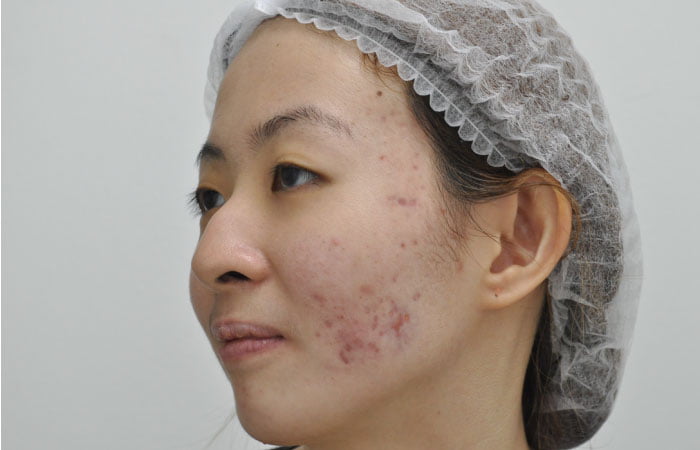Contact Info
-
Phone: 1300-22-0202
Ask the Experts
Scars & Keloid Removal:
Safe Treatments Done by Doctors

Keloid
A keloid is a type of raised scar. Unlike other raised scars, keloids grow much larger than the wound that caused the scar. Not everyone who gets a scar will develop a keloid. After an injury, months can pass before this scar appears. As these raised scars grow, they may feel painful or itchy. A keloid that covers a joint or large area can decrease a person’s ability to move that part of the body. No one treatment is best for all keloids. For best results, doctor will choose treatment based on the patient’s age, type of keloid, and other considerations. These scars can be difficult to get rid of, and some return after treatment. A treatment plan for keloids may include:
Injections of corticosteroids and other medicines:
These injections are often part of a treatment plan for keloids. When injected into the keloid, it helps to shrink the scar. Patients usually receive a series of injections once every 3 to 4 weeks. The first injections tend to relieve symptoms and make the keloid feel softer. Usually 50% to 80% of keloids shrink after being injected for 4-5 sessions. Many of these keloids, however, will regrow within 5 years.
Surgical removal (keloid surgery):
This treatment involves surgically cutting out the keloid. While this may seem like a permanent solution, it’s important to know that nearly 100% of keloids return after surgery. To reduce the risk of a keloid returning after surgical removal, injections of corticosteroids may help reduce the risk.

Scars Before

Scars After
Dermarolling / Microneedling
Dermarolling, a form of microneedling, involves using a mini wheel covered with hundreds of tiny needles to cause microinjury. When they are used properly, it can be a safe, simple, and cheap treatment for acne scarring, stretch marks, large pores, oily skin, fine lines, wrinkles and loss of skin firmness.
The controlled injuries to the skin lead to superficial bleeding. This triggers the body’s wound healing response, and the following occurs:
- the skin releases substances that stimulate growth
- new blood vessels form in the skin
- the skin starts to make more collagen
Over the next 5 days, the collagen produced by the body is deposited in the area of treated skin. This helps the skin to become firmer and may reduce the appearance of fine wrinkles.
People should avoid a dermaroller if they have a history of blood-clotting problems, or are using accutane or other medical treatments. Dermarollers should not be used on areas of skin that have eczema, sunburn or cold sores. Moles, skin inflammation or rosacea should also be avoided.
Chemical Peeling
The term ‘chemical peel’ applies to many different formulations ranging from weaker glycolic peels to the strongest phenol peels that often require sedation or general anesthesia. This treatment can correct acne, age spots, discoloration, tone, fine lines, freckles, melasma, sun damage, and more, depending on the strength of the chemical used.
The weaker peels are the AHA peels or fruit acid peels, most commonly Glycolic Acid, Citric Acid, and Lactic Acid, and can help to improve acne scars, skin tone and texture, diminish fine lines and wrinkles, and reduce the effects of sun damage. It works by removing dead cells and debris to regenerate skin cells without the traditional flaking redness or discomfort associated with more intense formulas.
After a thorough cleansing of the face, the peel is applied with either a brush, a pad, or a cotton swab. You might feel a slight tingling sensation that lasts for the duration of the peel. With the weaker peels, there is a very short-term pinkish or ruddy glow to the skin. The skin will look brighter right away with gradual improvement in fine lines, texture, and pigmentation. A series of mild or superficial peels is often needed for optimal results. Apply lotion or cream until the skin heals, and use sunscreen daily for the aftercare.
Medium-strength peels on the other hand, use some of the same acids in mild peels, just at a much higher level. Since these peels are deeper, your skin will be reddish after application. The skin crusts and peels off in one week. Your doctor may suggest taking an antiviral medication for 10 to 14 days before or after the peel if you have a history of cold sores. Aftercare instructions include applying a lotion or cream to the treated area and avoiding the sun until healing is complete. Makeup is allowed after about one week.
Frequently Asked Questions
Our Signature Whitening Laser Treatment, Pico2 Laser is a type of skin treatment used by dermatologists or physicians to reduce the appearance of acne scars, deep wrinkles, and other skin irregularities. It is a non-invasive procedure that uses laser, specially made of carbon dioxide, to remove the outer layers of damaged skin.
Usually need more than 5 sessions , if the acne scar was there for years.
Contact Info
-
Phone: 1300-22-0202
